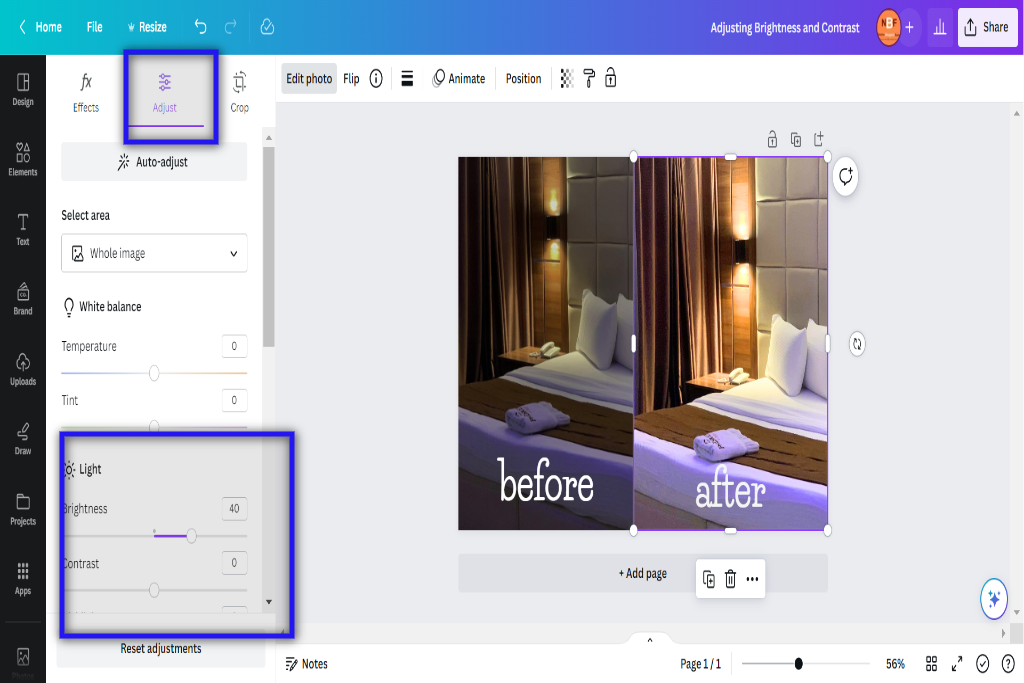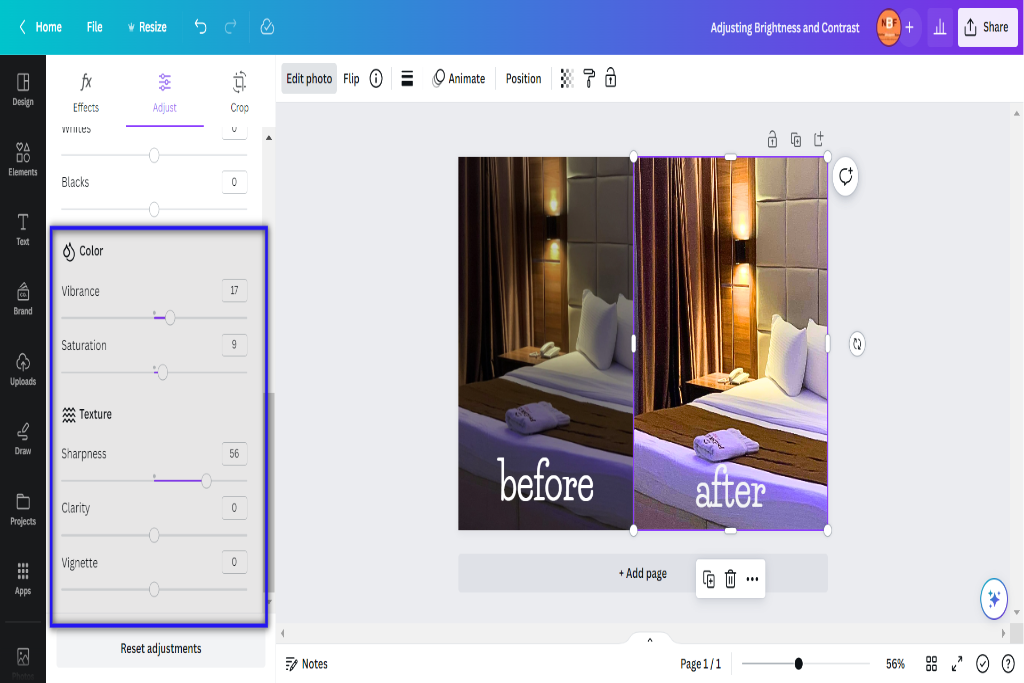Crafting an aesthetic Instagram feed has become a coveted pursuit for many in social media. If you’re a beginner, fret not! This article is here to provide you with ten valuable image editing tips that will help you create visually appealing posts.
To start, let’s delve into the fundamental principles of image editing and the selection of appropriate software. Understanding these basics allows you to effectively manipulate brightness, contrast, and color saturation, resulting in stunning visuals.
But that’s not all! We’ll also explore techniques such as cropping and framing, object removal, text and graphic experimentation, collage creation, and optimal image-saving methods. These strategies will take your Instagram game to the next level, captivating your audience with eye-catching feeds.
So, this article is perfect whether you’re an aspiring Instagram enthusiast or someone looking to enhance your editing skills. Get ready to curate a feed that leaves a lasting impression!
Table of Contents
- 1 Understanding the Basics of Image Editing.
- 2 Choosing the Right Editing Software
- 3 Adjusting Brightness and Contrast for Impactful Photos
- 4 Enhancing Colors for a Vibrant Feed
- 5 Mastering the Art of Cropping and Framing
- 6 Adding Filters and Presets for a Consistent Aesthetic
- 7 Removing Unwanted Objects and Blemishes
- 8 Experimenting With Text and Graphics
- 9 Creating Eye-Catching Collages and Grid Layouts
- 10 Saving and Exporting Images for Instagram
- 11 BONUS
- 12 Frequently Asked Questions
- 12.1 How Can I Remove Red-Eye From My Photos?
- 12.2 What Is the Best Software for Creating Collages and Grid Layouts?
- 12.3 How Can I Maintain a Consistent Aesthetic When Using Different Filters and Presets?
- 12.4 Are Any Specific Guidelines for Adding Text and Graphics to Images for Instagram?
- 12.5 How Can I Resize and Optimize My Images for Instagram Without Losing Quality?
Understanding the Basics of Image Editing.

Understanding the basics of image editing involves acquiring knowledge about various techniques and tools to enhance visual elements to achieve desired aesthetic outcomes. Two crucial aspects to consider when editing images are understanding image resolution and using filters and presets effectively.
Image resolution refers to the number of pixels that make up an image, determining its quality and clarity. High-resolution images have more pixels per inch, resulting in sharper details and better overall image quality. It is essential to understand how different resolutions affect the outcome of an edited image. Higher resolutions are generally preferred for print, while lower resolutions work well for web or social media platforms.
Filters and presets are pre-designed settings that can be applied to images to achieve specific effects or styles. They offer a quick way to enhance images without requiring extensive manual adjustments. Understanding how filters and presets work allows users to experiment with different looks and aesthetics effortlessly. By applying these tools effectively, users can create cohesive themes or moods across their edited images, contributing to a visually appealing Instagram feed.
Choosing the Right Editing Software

When selecting suitable editing software, it is important to consider the features and capabilities offered by each option. Choosing the right editing software for your specific needs can significantly impact the quality of your edited images. Here are some factors to consider when making this decision:
- Ease of use: Some editing software may have a steep learning curve, while others are more user-friendly.
- Available tools and effects: Different software offers various tools and effects that can uniquely enhance your images.
- Compatibility: Ensure your editing software is compatible with your device’s operating system.
- Cost: While free options are available, they may have limitations or watermarks on edited images.
Pros and cons of free image editing software:
- Pros: Cost-effective solution, accessible to all users regardless of budget constraints.
- Cons: Limited features compared to paid options, potential lack of technical support.
Ultimately, choosing the right editing software depends on personal preference and requirements. Consider experimenting with different options before settling on one that suits your specific needs and desired aesthetic for your Instagram feed.
Adjusting Brightness and Contrast for Impactful Photos

Enhancing visual dynamics and creating captivating visual effects are crucial for photography and design. By strategically adjusting elements such as color, composition, and perspective, photographers and designers can enhance the overall impact of their visuals.
These techniques make images more visually appealing and help convey a specific message or evoke certain emotions in viewers.
Enhancing Visual Dynamics
The manipulation of visual elements can contribute to the overall dynamism of an image, which is crucial for creating an aesthetically appealing Instagram feed. When it comes to enhancing visual dynamics in image editing, there are several key factors to consider.
- Using photo editing apps for mobile editing: Utilizing mobile editing apps such as VSCO or Snapseed allows quick and easy adjustments to be made on the go, ensuring that your images have a consistent look and feel.
- Understanding the importance of composition in image editing: The way elements are arranged within a frame can significantly affect the overall impact of an image. Attention to concepts such as the rule of thirds, leading lines, and balance can help create visually pleasing compositions.
- Experimenting with color grading and filters: Adjusting the colors in an image through color grading or applying filters can significantly enhance its visual appeal. Experiment with different styles and tones to find a look that suits your aesthetic.
- Adding depth and dimension through layering: Incorporating layers in your edits can add depth and dimension to a flat image. This can be achieved by blending multiple exposures or adding textures to create more visually interesting compositions.
Creating Captivating Visual Effects
Creating captivating visual effects involves utilizing various techniques and tools to enhance the overall appeal of an image. Photographers can elevate their images to new levels of creativity and engagement by creating unique photo compositions and using advanced editing techniques. One technique that can be employed is color grading to create a specific mood or atmosphere. This can be achieved by adjusting the hue, saturation, and brightness levels of different colors in an image. Another effective technique is selective focus, where some aspects in the frame are deliberately blurred while others remain sharp, drawing attention to a specific subject or area. Additionally, incorporating textures and overlays can add depth and interest to an image, allowing for a more immersive viewing experience.
| Technique | Description | Example |
|---|---|---|
| Color Grading | Adjusting colors to create a specific mood | Enhancing warm tones for a cozy atmosphere |
| Selective Focus | Blurring certain elements for emphasis | Highlighting a flower against a blurred background |
| Textures and Overlays | Adding depth and interest through overlaying | Incorporating film grain for the vintage aesthetic |
Enhancing Colors for a Vibrant Feed

This discussion will focus on color-enhancing techniques to create a vibrant feed.
Key points to consider include:
- Choosing color palettes that complement each other and convey the desired aesthetic
- Adjusting saturation levels to achieve the desired level of intensity or subtlety
- Enhancing contrast and brightness to make colors pop
These techniques can significantly impact the overall visual appeal of an Instagram feed and help create a cohesive and eye-catching aesthetic.
Choosing Color Palettes
Selecting appropriate color palettes is crucial in creating a visually appealing aesthetic for an Instagram feed. Color psychology studies how different colors can evoke certain emotions and reactions in individuals. When choosing color palettes for an Instagram feed, it is important to consider the desired mood or atmosphere that you want to convey to your audience.
Here are some tips for creating a cohesive feed:
- Stick to a consistent color scheme throughout your posts.
- Use complementary colors to create visual harmony.
- Experiment with different shades and tones within your chosen color palette.
- Consider using filters or editing tools to enhance and unify the colors in your photos.
Adjusting Saturation Levels
Moving on from choosing color palettes, another important aspect of editing images for an aesthetic Instagram feed is adjusting exposure levels and manipulating shadows and highlights.
These adjustments are crucial in enhancing an image’s overall look and feel. Adjusting exposure levels involves controlling the amount of light that enters the camera sensor, resulting in brighter or darker images. This can be done by increasing or decreasing the exposure compensation settings.
Manipulating shadows and highlights involves selectively brightening or darkening specific areas of an image to add depth and dimension. This can be achieved through photo editing software tools like curves or levels adjustment layers.
Enhancing Contrast and Brightness
Adjusting contrast and brightness levels is a crucial step in enhancing the visual appeal of images. It allows for the manipulation of tonal range and overall luminosity.
By increasing contrast, darker areas become darker, and lighter areas become lighter. This results in a more dramatic and vibrant image. On the other hand, adjusting brightness can make an image appear brighter or darker, depending on the desired effect.
These adjustments can greatly enhance sharpness by making details stand out more prominently. When contrast and brightness are correctly adjusted, the image becomes crisper and more defined.
Additionally, reducing noise is another benefit of adjusting contrast and brightness levels. Noise refers to unwanted graininess or pixelation in an image. Properly adjusting these settings can minimize the noise, resulting in a cleaner and smoother image.
Mastering contrast and brightness adjustments is essential for creating visually stunning images with enhanced sharpness and reduced noise. These adjustments play a significant role in enhancing the overall visual appeal of an image and should not be overlooked.
Mastering the Art of Cropping and Framing
Cropping and framing techniques can achieve a visually appealing composition and image focus. Mastering photo composition involves understanding how to effectively crop an image to enhance its visual impact. By eliminating unnecessary elements and focusing on the main subject, cropping can create a robust focal point and draw the viewer’s attention to specific details.
Additionally, framing techniques can enhance the composition by creating boundaries or frames within the image.
Incorporating overlays and textures can add depth and visual interest to photographs. Overlays are transparent layers that can be added on top of an image to create various effects, such as adding light leaks or bokeh. These overlays can give images a dreamy, ethereal quality or evoke a sense of nostalgia.
Conversely, textures add tactile qualities to photographs by simulating surfaces like wood grain or fabric. Applying these textures subtly can give images more depth and make them visually captivating.
Adding Filters and Presets for a Consistent Aesthetic
Applying filters and presets to photographs can contribute to a cohesive visual style by consistently enhancing color tones, contrast, and overall mood. This technique allows photographers to create a distinct aesthetic for their images that reflects their personal style or brand identity. By using natural lighting for stunning photos and incorporating unique editing techniques, photographers can further enhance the impact of their images.
Here are four ways in which filters and presets can help achieve a consistent aesthetic:
- Color enhancement: Filters can adjust the saturation, hue, and temperature of an image, giving it a specific color palette that enhances its overall mood.
- Contrast enhancement: Presets can increase or decrease the contrast in an image, making it more dynamic or creating a softer look.
- Mood creation: Filters allow photographers to evoke emotions by adjusting brightness, shadows, and highlights.
- Brand consistency: By applying specific filters or presets across all images, photographers can create a recognizable visual style that aligns with their brand or Instagram feed.
Removing Unwanted Objects and Blemishes
Removing unwanted objects and blemishes from photographs is a commonly used technique in image editing. This process enhances images by eliminating distractions or imperfections that may detract from the overall composition. Various techniques can be employed to achieve this, ranging from simple spot healing to advanced content-aware fill algorithms.
One standard method for removing unwanted objects is the use of clone stamping. This tool allows the user to sample an area of the image and then paint over the unwanted object, effectively replacing it with pixels from the sampled region.
Another technique is content-aware fill, which automatically analyzes the surrounding areas and intelligently fills the selected object with appropriate textures and colors.
In addition to removing unwanted objects, blemish techniques enhance portraits by eliminating skin imperfections such as acne, scars, or wrinkles. The spot healing brush tool is often used for this purpose, allowing for quick and seamless removal of minor blemishes.
Overall, these techniques enable photographers and editors to create visually appealing images by eliminating distractions and enhancing the quality of their compositions.
Experimenting With Text and Graphics
Experimenting with text and graphics involves exploring different ways to combine textual elements and visual elements to create engaging and visually impactful designs. This process allows designers to use different typography styles, sizes, and arrangements to convey a specific message or aesthetic. Additionally, incorporating unique textures into the design can add depth and visual interest.
Here are some tips for experimenting with text and graphics:
- Play with typography: Try using different fonts, weights, and styles to create contrast and hierarchy within your design. Experiment with serif, sans-serif, script, or display fonts to find the one that best suits your desired aesthetic.
- Mix text and imagery: Combine textual elements with visuals, such as photographs or illustrations, to create dynamic compositions that draw attention. Experiment with overlaying text on top of images or integrating it within the imagery itself.
- Use color strategically: Choosing the right color palette can significantly enhance the impact of your text and graphics. Consider using contrasting colors for emphasis or harmonious colors for a more unified look.
- Incorporate unique textures: Adding textures such as grunge effects, paper overlays, or brush strokes can give your design a tactile feel and make it visually attractive.
Creating Eye-Catching Collages and Grid Layouts
Creating eye-catching collages and grid layouts involves arranging various visual elements in a structured manner to create visually appealing compositions. These layouts can be achieved by utilizing different techniques, such as creating unique photo borders and organizing images with themed layouts.
One way to enhance the aesthetic appeal of a collage or grid layout is by incorporating unique photo borders. These borders can be created using various design elements, such as patterns, shapes, or textures. One can add depth and visual interest to the overall composition by selecting and applying appropriate border styles.
Another critical aspect of creating eye-catching collages and grid layouts is organizing images with themed layouts. This involves carefully curating a collection of images that share a common theme or subject matter. One can create a cohesive and visually engaging arrangement by grouping these images based on a color scheme, subject matter, or mood.
Saving and Exporting Images for Instagram
To successfully export and save images for use on the Instagram platform, it is essential to consider the appropriate file format and dimensions required by the application. Instagram supports various file formats, including JPEG, PNG, BMP, and GIF. However, it is recommended to use JPEG as it provides a good balance between image quality and file size.
Regarding image dimensions, Instagram recommends a square aspect ratio with a minimum resolution of 1080 pixels by 1080 pixels. This ensures your images appear crisp and clear on mobile devices and desktop screens.
To optimize image resolution for Instagram, you can utilize its built-in editing tools. These tools allow you to make quick adjustments such as cropping, rotating, applying filters, adjusting brightness and contrast levels, and enhancing colors. By using these tools effectively, you can enhance the overall aesthetic appeal of your images before uploading them to your feed.
In summary:
- Consider using JPEG as the preferred file format for exporting images.
- Ensure a square aspect ratio with a minimum resolution of 1080 pixels by 1080 pixels.
- Utilize Instagram’s editing tools for quick adjustments.
- Experiment with filters and enhancements to enhance the visual appeal of your images.
BONUS
Elevate your Instagram feed with OnlySocial’s powerful Image Editing function. Create stunning graphics that align with your brand’s social media presence using our free stock images and editor. Choose from a variety of free templates to streamline your design process. With availability on all plans, OnlySocial is your all-in-one platform for social media growth. Don’t miss out on the opportunity to enhance your visual content. Sign up for a commitment-free 7-day trial today.
Frequently Asked Questions
How Can I Remove Red-Eye From My Photos?
The red eye in photos can be corrected using reduction tools, manual selection, correction methods, or advanced image editing software. Common mistakes in photo editing include overcorrection, improper color balance adjustments, or inadequate blending of corrections.
What Is the Best Software for Creating Collages and Grid Layouts?
When creating collages and grid layouts, the best software varies depending on individual preferences and needs. However, popular choices include Adobe Photoshop, Canva, Pic Collage, and Fotor.
How Can I Maintain a Consistent Aesthetic When Using Different Filters and Presets?
One must consider the desired aesthetic, image quality, and overall theme to maintain color consistency and choose the proper lighting when using different filters and presets. How can this be achieved?
Are Any Specific Guidelines for Adding Text and Graphics to Images for Instagram?
When adding text and graphics to images for Instagram, it is essential to follow best practices and design tips. These guidelines can help maintain a consistent aesthetic and enhance the overall visual appeal of the feed.
How Can I Resize and Optimize My Images for Instagram Without Losing Quality?
To resize and optimize images for Instagram without sacrificing quality, it is important to employ techniques that enhance color vibrancy and create a cohesive theme. This ensures visually appealing content that aligns with the platform’s aesthetic standards.




